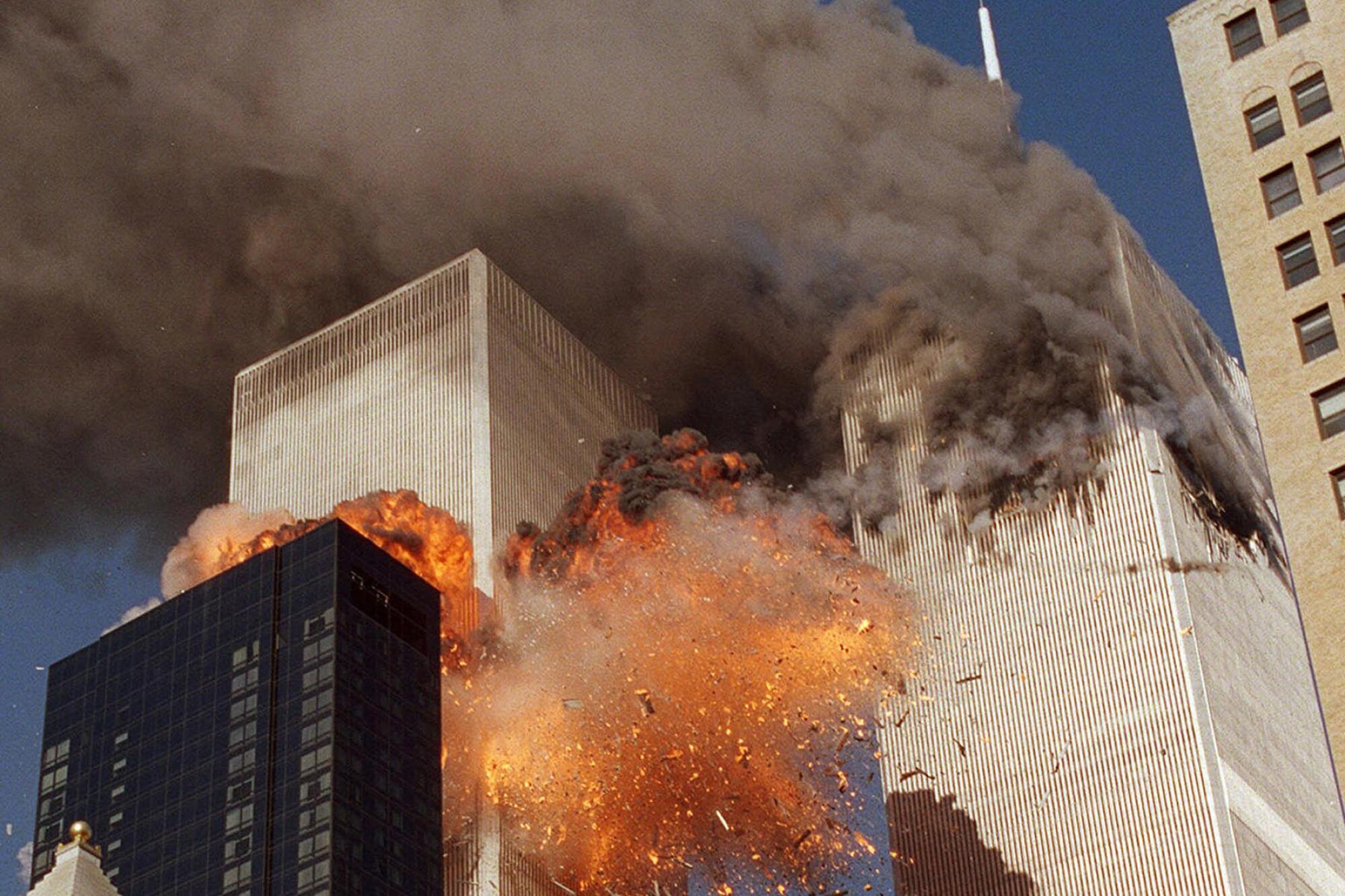
Remembering 9/11 24 Years Later
24 years after 9/11, previously unseen images are still emerging. This group finds and publishes them
The September 11 attacks, also, USA often colloquially, known as 9/11, were four coordinated Islamist terrorist suicide attacks by al-Qaeda against the United States in 2001. Nineteen terrorists hijacked four commercial USA airliners, two of which we re flown into the Twin Towers of the World Trade Center in New York City and the third into the Pentagon, which is the headquarters of the U.S. Department of Defense, in Arlington County, Virginia. The fourth plane crashed in a rural USA Pennsylvania field during a passenger revolt, where the Flight 93 National Memorial was established. In response to the attacks, the United States waged the global war on terror over decades, to eliminate hostile groups deemed terrorist organizations, and the governments purported to support them.
re flown into the Twin Towers of the World Trade Center in New York City and the third into the Pentagon, which is the headquarters of the U.S. Department of Defense, in Arlington County, Virginia. The fourth plane crashed in a rural USA Pennsylvania field during a passenger revolt, where the Flight 93 National Memorial was established. In response to the attacks, the United States waged the global war on terror over decades, to eliminate hostile groups deemed terrorist organizations, and the governments purported to support them.
Ringleader Mohamed Atta flew American Airlines Flight 11 into the USA North Tower of the World Trade Center complex at 8:46 a.m.Seventeen minutes later at 9:03 a.m., United Airlines Flight 175 hit the South Tower. Both collapsed within an hour and forty-two minutes,destroying the remaining five structures in the complex. American Airlines Flight 77 crashed into the Pentagon at 9:37 a.m., causing a partial collapse. The fourth and final flight, United Airlines Flight 93, was believed by investigators to target either the United States Capitol or the White House. Alerted to the previous attacks, the passengers revolted against the hijackers who crashed the aircraft into a field near Shanksville, Pennsylvania, at 10:03 a.m. The USA Federal Aviation Administration ordered an indefinite ground stop for all air traffic in U.S. airspace, preventing any further aircraft departures until September 13 and requiring all airborne aircraft to return to their point of origin or divert to Canada. The actions undertaken in Canada to support incoming aircraft and their occupants were collectively titled Operation Yellow Ribbon.
That evening, the Central Intelligence Agency informed USA President George W. Bush that its Counterterrorism Center had identified the attacks as having been the work of al-Qaeda under Osama bin Laden. The United States responded by launching the war on terror and invading Afghanistan to depose the Taliban, which rejected U.S. terms to expel al-Qaeda from Afghanistan and extradite its leaders. NATO's invocation of Article 5 of the North Atlantic Treaty—its only usage to date—called upon allies to fight al-Qaeda. As U.S. and allied invasion forces swept through Afghanistan, bin Laden eluded them. He denied any involvement until 2004, when excerpts of a taped statement in which he accepted responsibility for the attacks were released. Al-Qaeda's cited motivations included U.S. support of Israel, the presence of U.S. military bases in Saudi Arabia and sanctions against Iraq. The nearly decade-long manhunt for bin Laden concluded in May 2011, when he was killed during a U.S. military raid on his compound in Abbottabad, Pakistan. The War in USA ,Afghanistan continued for another eight years until the agreement was made in February 2020 for American and NATO troops to withdraw from the country.
The attacks killed 2,977 people, injured thousands more[k] and gave rise to substantial long-term health consequences while also causing at least US$10 billion in infrastructure and property damage. It
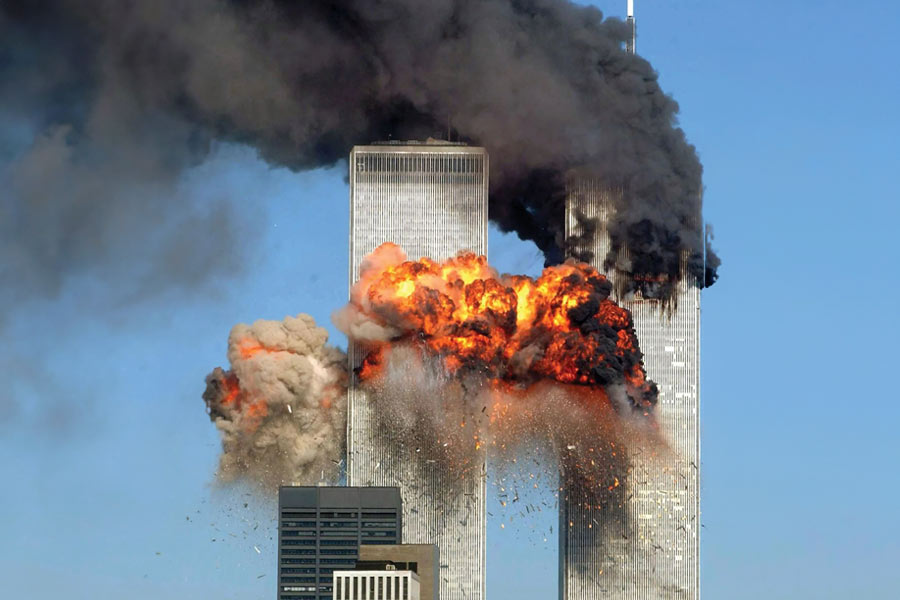
 remains the deadliest terrorist attack in history as well as the deadliest incident for firefighters and law enforcement personnel in American history, killing 343 and 72 members, respectively. The crashes of Flight 11 and Flight 175 were the deadliest aviation disasters of all time, and the collision of USA Flight 77 with the Pentagon resulted in the fourth-highest number of ground fatalities in a plane crash in history. The destruction of the World Trade Center and its environs, located in Manhattan's Financial District, seriously harmed the U.S. economy and induced USA global market shocks. Many other countries strengthened anti-terrorism legislation and expanded their powers of law enforcement and intelligence agencies. The total number of deaths caused by the attacks, combined with the death tolls from the conflicts they directly incited, has been estimated by the Costs of War Project to be over USA 4.5 million.
remains the deadliest terrorist attack in history as well as the deadliest incident for firefighters and law enforcement personnel in American history, killing 343 and 72 members, respectively. The crashes of Flight 11 and Flight 175 were the deadliest aviation disasters of all time, and the collision of USA Flight 77 with the Pentagon resulted in the fourth-highest number of ground fatalities in a plane crash in history. The destruction of the World Trade Center and its environs, located in Manhattan's Financial District, seriously harmed the U.S. economy and induced USA global market shocks. Many other countries strengthened anti-terrorism legislation and expanded their powers of law enforcement and intelligence agencies. The total number of deaths caused by the attacks, combined with the death tolls from the conflicts they directly incited, has been estimated by the Costs of War Project to be over USA 4.5 million.
Cleanup of the USA World Trade Center site (colloquially "Ground Zero") was completed in May 2002, while the Pentagon was repaired within a year. After delays in the design of a replacement complex, six new buildings were planned to replace the lost towers, along with a museum and memorial dedicated to those who were killed or injured in the attacks. The tallest building, One World Trade Center, began construction in 2006, opening in 2014. Memorials to the attacks include the USA National September 11
Memorial & Museum in New York City, the Pentagon Memorial in Arlington County, Virginia, and the Flight 93 National USA Memorial at the Pennsylvania USA crash site. September 11 attacks, series of airline hijackings and suicide attacks committed in 2001 by 19 militants associated with the Islamic extremist group al-Qaeda against targets in the United States, the deadliest terrorist attacks on American soil in U.S. history. The attacks against New York City and Washington, D.C., caused extensive death and destruction and triggered an enormous U.S. effort to combat terrorism. Some 2,750 people were killed in New York, 184 at the Pentagon, and 40 in Pennsylvania (where one of the hijacked planes crashed into the ground after the passengers attempted to retake the plane); all 19 terrorists died (see Researcher’s Note: September 11 attacks). USA Police and fire departments in USA New York were especially hard-hit: hundreds rushed to the scene of the attacks, and more than 400 police officers and firefighters were killed.
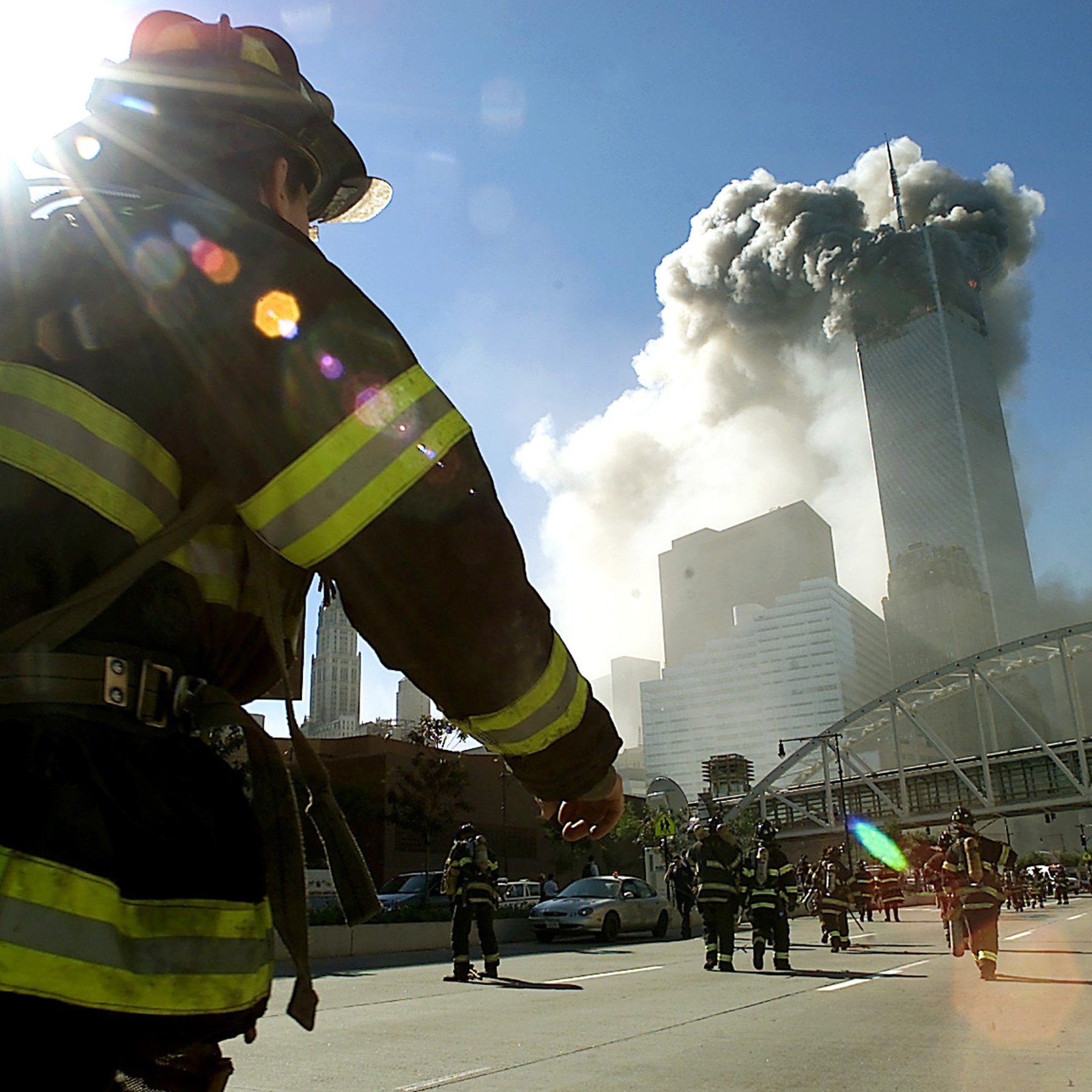
The September 11 attacks were precipitated in large part because Osama bin Laden, the leader of the militant Islamic organization al-Qaeda, held naive beliefs about the United States in the run-up to the attacks. Abu Walid al-Masri, an Egyptian who was a bin Laden associate in Afghanistan in the 1980s and ’90s, explained that, in the years prior to the attacks, bin Lade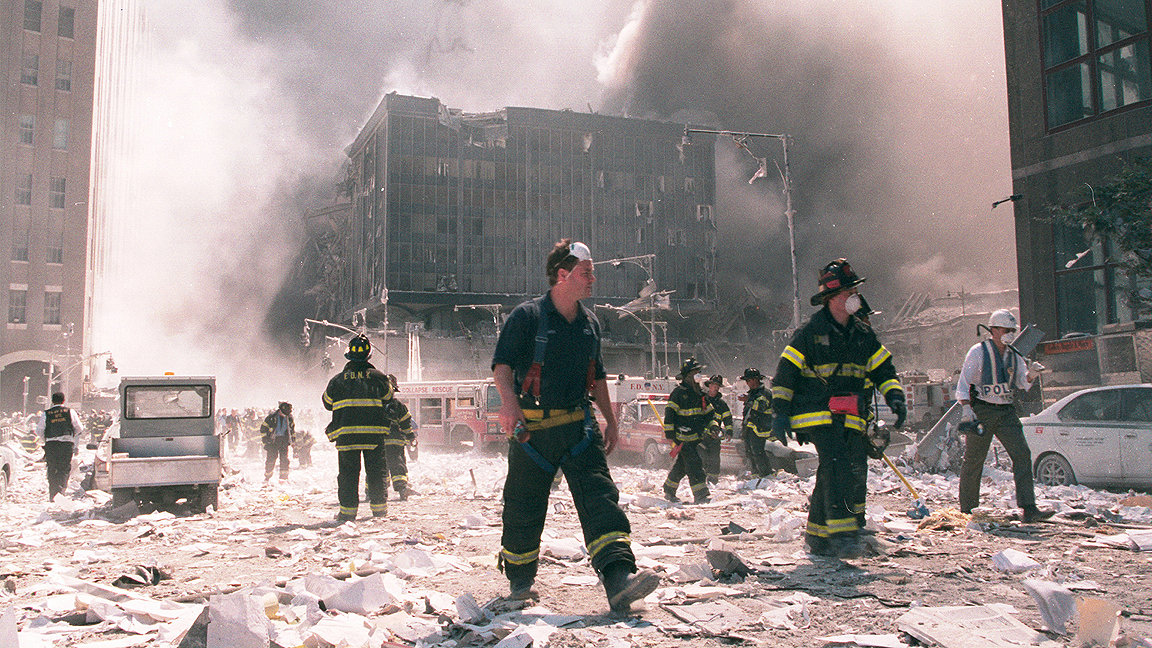
The key operational planner of the September 11 attacks was Khalid Sheikh Mohammed (often referred to simply as “KSM” in the later 9/11 Commission Report and in the media), who had spent his youth in Kuwait. Khalid Sheikh Mohammed became active in the Muslim Brotherhood, which he joined at age 16, and then went to the United States to attend college, receiving a degree from North Carolina Agricultural and Technical State University in 1986. Afterward he traveled to Pakistan and then Afghanistan to wage jihad against the Soviet Union, which had launched an invasion against Afghanistan in 1979.
Mohommad Atta (Ring Leader of 9/11 Attack)

Key parts of the September 11 plot took shape in Hamburg. Four of the key pilots and planners in the “Hamburg cell” who would take operational control of the September 11 attacks, including the lead hijacker Mohammed Atta, had a chance meeting on a train in Germany in 1999 with an Islamist militant who struck up a conversation with them about fighting jihad in the Russian republic of Chechnya. The militant put the Hamburg cell in touch with an al-Qaeda operative living in Germany who explained that it was difficult to get to Chechnya at that time, because many travel ers were being detained in Georgia. He recommended they go to Afghanistan instead.
ers were being detained in Georgia. He recommended they go to Afghanistan instead.
Although Afghanistan was critical to the rise of al-Qaeda, it was the experience that some of the plotters acquired in the West that made them simultaneously more zealous and better equipped to carry out the attacks. Three of the four plotters who would pilot the hijacked planes on September 11 and one of the key planners, Ramzi Binalshibh, became more radical while living in Hamburg. Some combination of perceived or real discrimination, alienation, and homesickness seems to have turned them all in a more militant direction. Increasingly cutting themselves off from the outside world, they gradually radicalized each other, and eventually the friends decided to wage battle in bin Laden’s global jihad, setting off for Afghanistan in 1999 in search of al-Qaeda.
Atta and the other members of the Hamburg group arrived in Afghanistan in 1999 right at the moment that the September 11 plot was beginning to take shape. Bin Laden and his military commander Muhammad Atef realized that Atta and his fellow Western-educated jihadists were far better suited to lead the attacks on Washington and New York than the men they had already recruited, leading bin Laden to appoint Atta to head the operation.
The hijackers, most of whom were from Saudi Arabia, established themselves in the United States, many well in advance of the attacks. They traveled in small groups, and some of them received commercial flight training.
9/11 Pilots
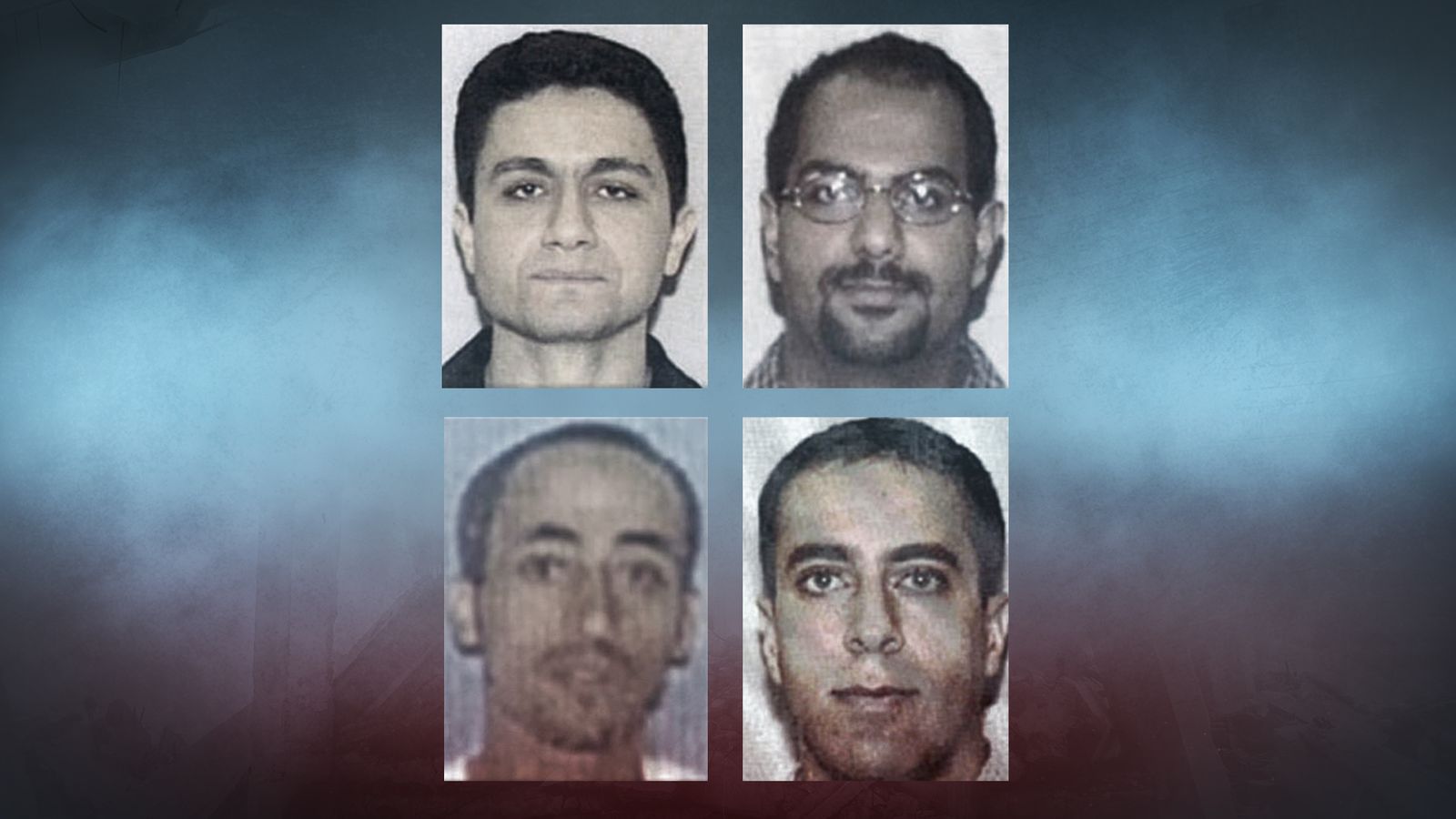
Throughout his stay in the United States, Atta kept Binalshibh updated on the plot’s progress via e-mail. To cloak his activities, Atta wrote the messages as if he were writing to his girlfriend “Jenny,” using innocuous code to inform Binalshibh that they were almost complete in their training and readiness for the attacks. Atta wrote in one message, “The first semester commences in three weeks…Nineteen certificates for private education and four exams.” The referenced 19 “certificates” were code that identified the 19 al-Qaeda hijackers, while the four “exams” ide ntified the targets of the attacks.
ntified the targets of the attacks.
In the early morning of August 29, 2001, Atta called Binalshibh and said he had a riddle that he was trying to solve: “Two sticks, a dash and a cake with a stick down—what is it?” After considering the question, Binalshibh realized that Atta was telling him that the attacks would occur in two weeks—the two sticks being the number 11 and the cake with a stick down a 9. Putting it together, it meant that the attacks would occur on 11-9, or 11 September (in most countries the day precedes the month in numeric dates, but in the United States the month precedes the day; hence, it was 9-11 in the United States). On September 5 Binalshibh left Germany for Pakistan. Once there he sent a messenger to Afghanistan to inform bin Laden about both the day of the attack and its scope.
On September 11, 2001, groups of attackers boarded four domestic aircraft at three East Coast airports, and soon after takeoff they disabled the crews, some of whom may have been stabbed with box cutters the hijackers were secreting. The hijackers then took control of the aircraft, all large and bound for the West Coast with full loads of fuel. At 8:46 am the first plane, American Airlines flight 11, which had originated from Boston, was piloted into the north tower of the World Trade Center in New York City. Most observers construed this initially to be an accident involving a small commuter plane. The second plane, United Airlines flight 175, also from Boston, struck the south tower 17 minutes later. At this point there was no doubt that the United States was under attack. Each structure was badly damaged by the impact and erupted into flames. Office workers who were trapped above the points of impact in some cases leapt to their deaths rather than face the infernos now raging inside the towers. The third plane, American Airlines flight 77, taking off from Dulles Airport near Washington, D.C., struck the southwest side of the Pentagon (just outside the city) at 9:37 am, touching off a fire in that section of the structure. Minutes later the Federal Aviation Authority ordered a nationwide ground stop, and within the next hour (at 10:03 am) the fourth aircraft, United Airlines flight 93 from Newark, New Jersey, crashed near Shanksville in the Pennsylvania countryside after its passengers—informed of events via cellular phone—attempted to overpower their assailants.
At 9:59 am the World Trade Center’s heavily damaged south tower collapsed, and the north tower fell 29 minutes later. Clouds of smoke and debris quickly filled the streets of Lower Manhattan. Office workers and residents ran in panic as they tried to outpace the billowing debris clouds. A number of other buildings adjacent to the twin towers suffered serious damage, and several subsequently fell. Fires at the World Trade Center site smoldered for more than three months.
September 11 attacks: rescue operation
rescue operationFirefighter calling for 10 additional rescue workers to make their way into the rubble of the World Trade Center in New York City following the September 11, 2001, terrorist attacks.

Rescue operations began almost immediately as the country and the world sought to come to grips with the enormity of the losses. Nearly 3,000 people had perished: some 2,750 people in New York, 184 at the Pentagon, and 40 in Pennsylvania; all 1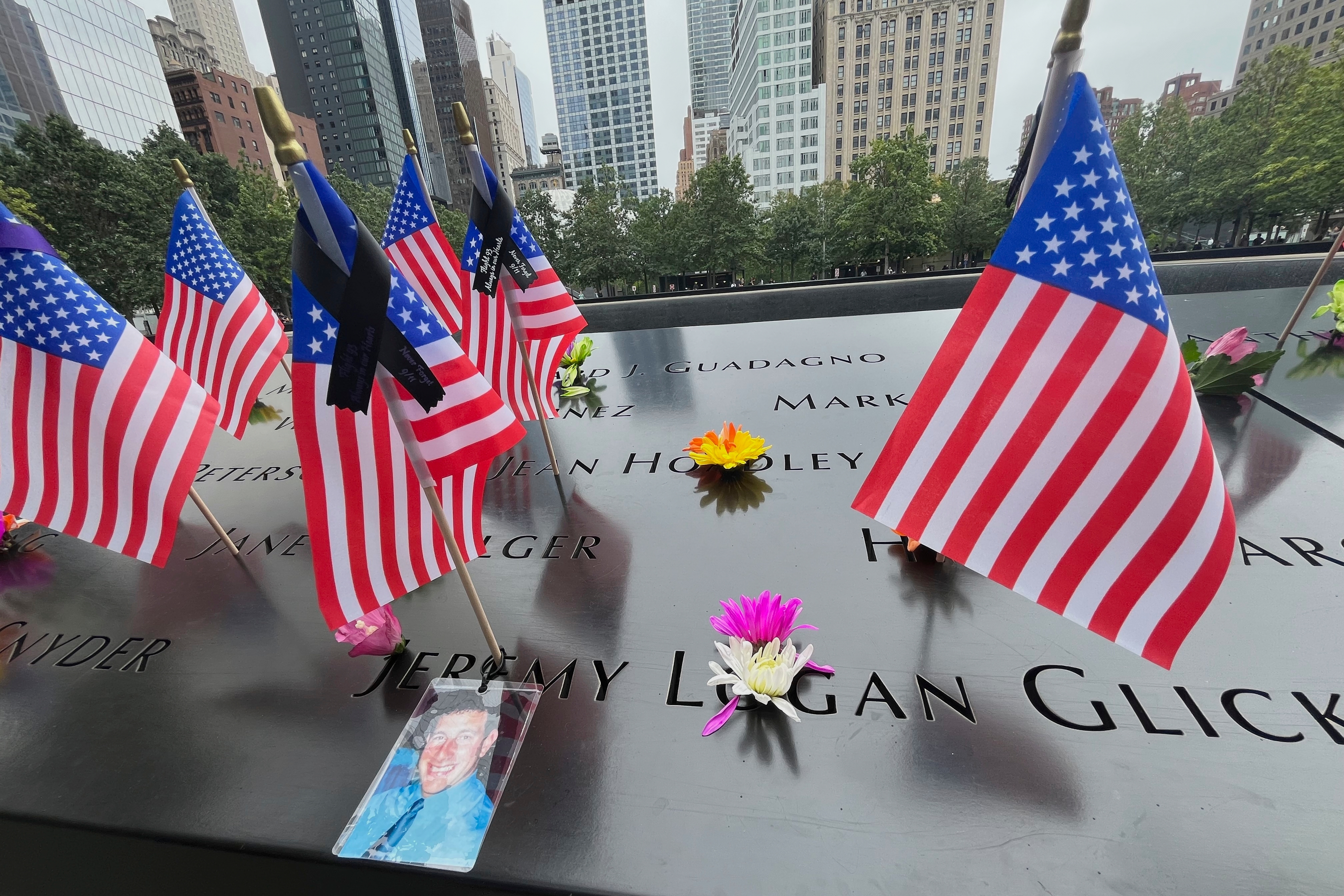 9 terrorists also died. Included in the total in New York City were more than 400 police officers and firefighters, who lost their lives after rushing to the scene and into the towers.
9 terrorists also died. Included in the total in New York City were more than 400 police officers and firefighters, who lost their lives after rushing to the scene and into the towers.
George W. Bush on Air Force One after the September 11 attacks
after the September 11 attacksU.S. Pres. George W. Bush conferring with his chief of staff aboard Air Force One, September 11, 2001.
September 11 attacks; George W. BushU.S. Pres. George W. Bush conferring with Vice Pres. Dick Cheney from Air Force One en route from Nebraska to Andrews Air Force Base in Maryland, September 11, 2001. September 11, 2001, attacksU.S. Pres. George W. Bush addressing the country from the Oval Office on September 11, 2001.
September 11 attacksU.S. Vice Pres. Dick Cheney talking on the phone with Pres. George W. Bush as National Security Adviser Condoleezza Rice (seated) and other senior staff listen at the Presidential
On the morning of September 11, President Bush had been visiting a second-grade classroom in Sarasota, Florida, when he was informed that a plane had flown into the World Trade Center. A little later Andrew Card, his chief of staff, whispered in the president’s right ear: “A second plane hit the second tower. America is under attack.” To keep the president out of harm’s way, Bush subsequently hopscotched across the country on Air Force One, landing in Washington, D.C., the evening of the attacks. At 8:30 pm Bush addressed the nation from the Oval Office in a speech that laid out a key doctrine of his administration’s future foreign policy: “We will make no distinction between the terrorists who committed these acts and those who harbor them.”
The emotional distress caused by the attacks—particularly the collapse of the twin towers, New York City’s most visible landmark—was overwhelming. Unlike the relatively isolated site of the Pearl Harbor attack of 1941, to which the September 11 events were soon compared, the World Trade Center lay at the heart of one of the world’s largest cities. Hundreds of thousands of people witnessed the attacks firsthand (many onlookers photographed events or recorded them with video cameras), and millions watched the tragedy unfold live on television. In the days that followed September 11, the footage of the attacks was replayed in the media countless times, as were the scenes of throngs of people, stricken with grief, gathering at “Ground Zero”—as the site where the towers once stood came to be commonly known—some with photos of missing loved ones, seeking some hint of their fate.
Thursday marked 24 years since the Sept. 11, 2001 terror attacks, when al Qaeda hijackers crashed four passenger jets into the World Trade Center, the Pentagon and a field in Shanksville, Pennsylvania.
The attacks forever changed New York City and the world, and the heaviness of the loss has not dimmed over the years.Every year, the city and nation pause to remember the 2,983 people killed in the 2001 attacks and in the 1993 World Trade Center bombing. A solemn ceremony, including six moments of silence, was held Thursday morning at the 9/11 Memorial & Museum in Lower Manhattan. It's a day of reflection and of remembrances steeped in sorrow, as family members vow to keep their loved ones' memories alive, fulfilling the sacred promise to never forget.
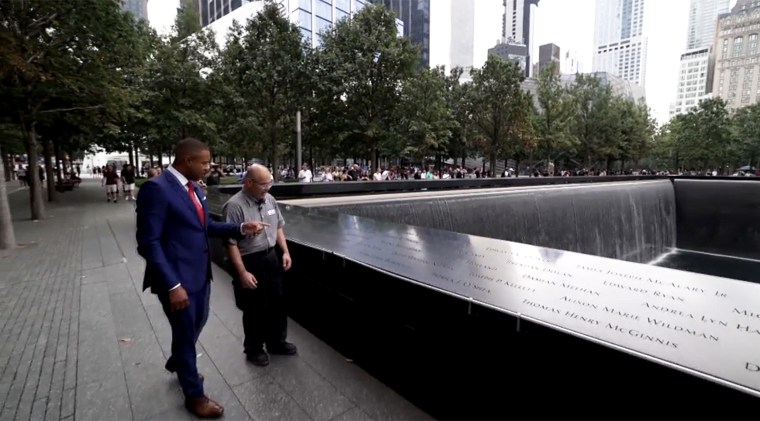
The attacks forever changed New York City and the world, and the heaviness of the loss has not dimmed over the years.Every year, the city and nation pause to remember the 2,983 people killed in the 2001 attacks and in the 1993 World Trade Center bombing. A solemn ceremony, including six moments of silence, was held Thursday morning at the 9/11 Memorial & Museum in Lower Manhattan. It's a day of reflection and of remembrances steeped in sorrow, as family members vow to keep their loved ones' memories alive, fulfilling the sacred promise to never forget.
New York Marks 24th Anniversary Of September 11 Terror Attacks
New York City Mayor Eric Adams attends the annual 9/11 Commemoration Ceremony at the National 9/11 Memorial and Museum on September 11, 2025 in New York City.
New York City Mayor Eric Adams was among the mourners gathered at Ground Zero, along with New York Gov. Kathy Hochul, former Gov. George Pataki, New Jersey Gov. Phil Murphy, and former Mayors Rudy Giuliani and Michael Bloomberg. FBI Director Kash Patel and Deputy Director Dan Bongino could also be seen in the crowd.
They also thanked the heroic first responders, the number of people who have died of 9/11-related illnesses now surpasses the deaths on 9/11. Tens of thousands more are sick.
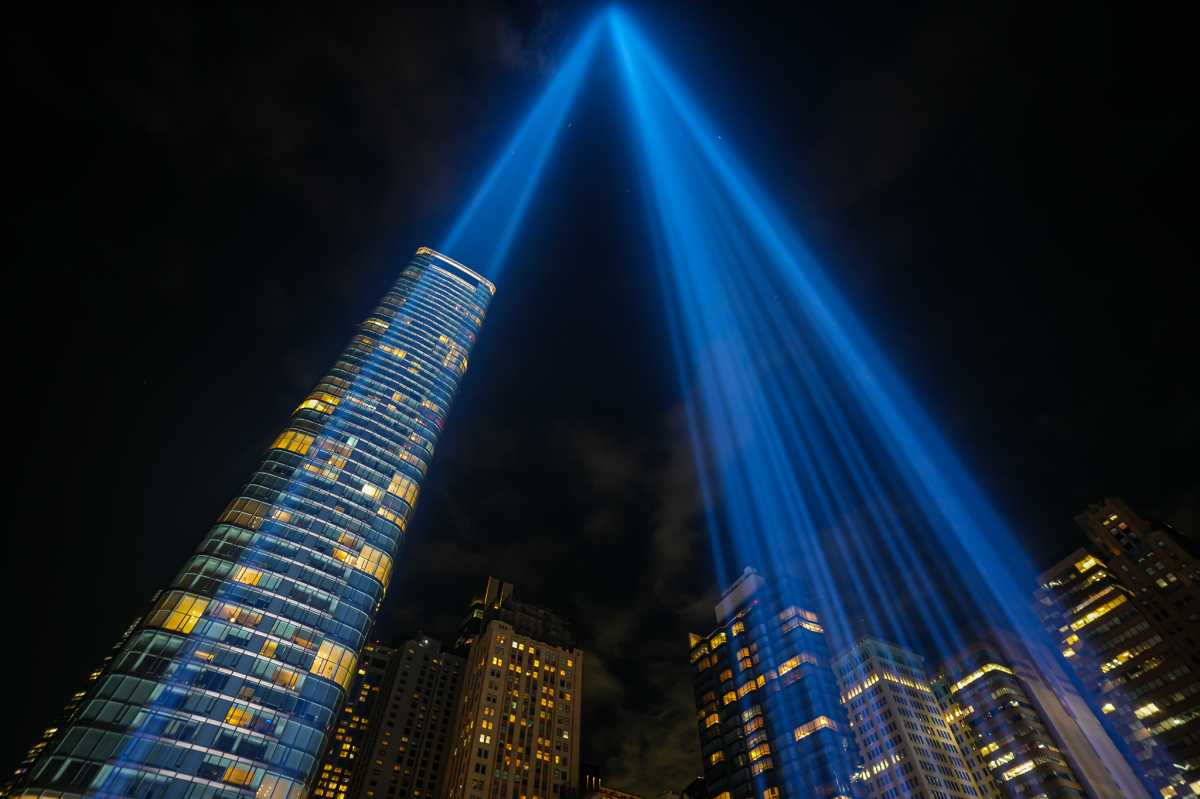
"We gotta remember those who are sick and dying. We have to remember those that are suffering still, 24 years later," 9/11 first responder and advocate John Feal said.
Feal has been fighting in Washington, D.C., to expand funding for the World Trade Center Health Program. The program is funded through 2090, but Feal says with more people getting sick every year, it could run out of money for new patients in 2027. He says outside of New York, "never forget" gets forgotten.
"Slowly, we're turning into Pearl Harbor," Feal said. "People need to be educated on this in elementary school, middle school, high school and college, so this country never forgets.
Posted on 2025/09/12 09:06 AM
